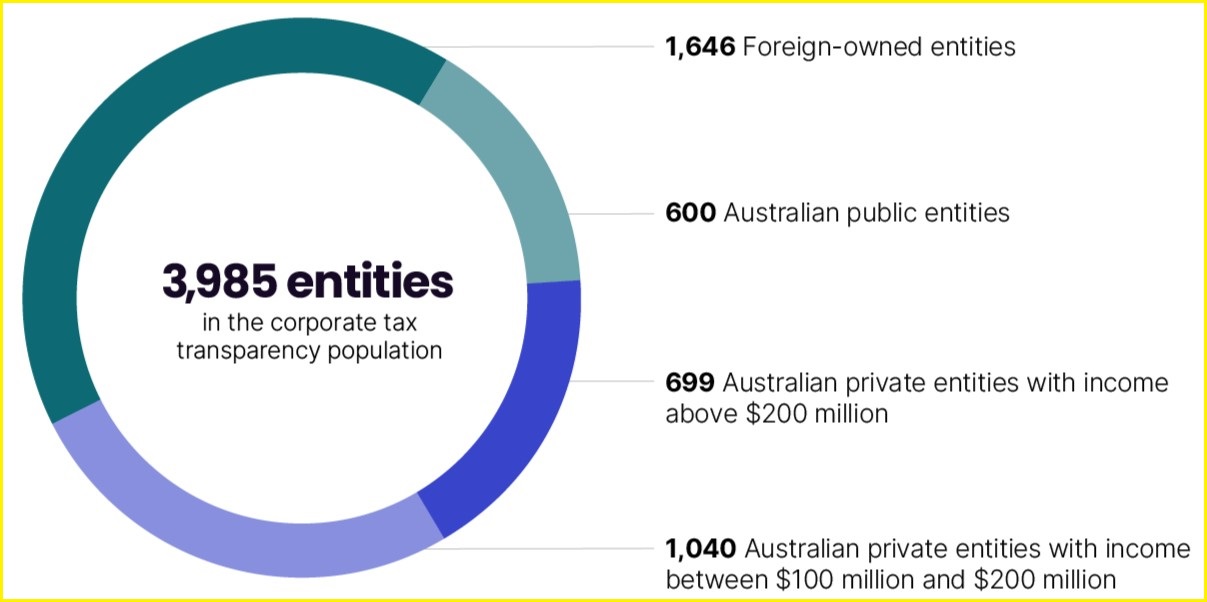Australian and international technology companies are among more than 1,200 organisations which did not pay tax in the 2022-23 financial year, according to an Australian Taxation Office (ATO) report.
The ATO’s tenth corporate tax transparency report, released last Friday, showed around 30% of the 3,985 entities that lodged tax returns for 2022–23 did not pay any tax in Australia that year.
Big names in technology which did not pay tax for 2022-23 included TPG Telecom (on income of almost $5.9 billion), Sony Australia (which earned more than $1.5 billion), Netflix Australia (which made more than $1.1 billion), and Australian design giant Canva (which reported more than $1.4 billion in income and $69.9m in taxable income).
Smaller names which paid no tax in 2022-23 included cyber security companies CyberCX, Trend Micro, and Tesserant; IT company Datacom; telecommunications company Superloop; fintech firm Zip Co; and Chinese giant Huawei Technologies.
Search the full list of entities from the ATO report below.
ATO deputy commissioner Rebecca Saint told ABC News that the agency had “issues with the tech sector”, but in a press release said the ATO had seen continued “improvement in the tax compliance of large businesses” as it worked to prevent tax avoidance.
“While there are legitimate reasons why a company may pay no income tax, the Australian community can be assured we pay close attention to those who pay no income tax to ensure that they are not trying to game the system,” she said.
Assistant Treasurer Stephen Jones told ABC News on Friday that identifying multinational tax avoidance was a “huge priority for the government”, but some businesses rightly did not always pay tax.
“There’ll be some of those businesses who aren’t paying tax because they’re not making any money, they’re breaking even, or they’ve made a huge capital investment and any money they have made is being offset against the capital investments that they’ve made,” he said.
“So, some of that is signs of healthy economic activity, particularly if there’s been a big capital investment — we want that, it’s going to drive productivity.
“But if it’s avoidance, we’re onto it.”
This ATO graph shows how many entities did (and did not) pay tax in 2022-23. Image: ATO / Supplied
Big Tech’s income minimisation
The percentage of organisations that paid no income tax has dropped from 36% in the ATO’s first corporate tax transparency report (2013-14) to 31% in 2022-23.
However, major technology companies have often claimed that only very small amounts of their income in Australia are taxable, and have used sophisticated accounting to minimise what they owed under Australia’s 30% corporate tax rate.
Microsoft’s local data centre business paid no tax in 2022-23 on $1.1 billion of income, while the company’s main Australian arm paid more than $118 million in tax on $7.5 billion in income, almost $400 million of which was taxable.
Apple paid almost $142 million in tax in 2022-23 after raking in more than $12 billion in income in Australia — only $481 million (or around 4%) of which was reported as taxable.
Facebook Australia paid almost $38 million in tax on almost $1.3 billion of income in the same year, while Google Australia paid $124 million on $2 billion in income and its Google Cloud arm paid almost $9 million on $158 million in income.
Samsung Electronics Australia paid more than $38 million in tax in 2022-23 after making almost $3.4 billion in local income.
A total of $97.9 billion in income tax was paid by large corporations for the 2022-23 financial year, up 16.7% from the previous year and the largest amount since reporting began, the ATO said.
The increase was partly due to higher profits from mining, oil, and gas companies.
“Tax paid by the oil and gas sector increased to $11.6 billion in 2022–23, with some oil and gas companies now amongst the largest taxpayers in Australia,” Saint said.
“This result was driven by a combination of commodity prices, the project production life cycle, and ATO intervention.”
The data showed that for a second year in a row, the mining sector paid more tax than all other sectors combined.
This ATO graph shows corporate entities by their ownership segment in 2022-23. Image: ATO / Supplied
ATO’s AI-based tax cheats plan
The ATO outlined last week how it uses artificial intelligence technologies to improve its processes and crack down on tax avoidance.
In a submission to a parliamentary inquiry into the use of AI systems by the public sector on 25 October, the agency said it used AI “to review large quantities of unstructured data, generate risk models to identify potential non-compliance, provide real time prompts to taxpayers and draft and edit communications”.
In one example, natural language processing had been used to process 36 million documents and identify “entities of interest and their relationships”, the ATO said.
“Since 2016, this initiative helped raise more than $256 million in liabilities and collect over $65 million in cash as of September 2024,” it said.
AI was used to send real-time prompts to taxpayers when they were completing their tax returns through MyTax and could identify taxpayers who had payments due but were “unlikely to pay on time”, the ATO said.
The agency said AI was also used for fraud protection, matching information submitted by taxpayers, and identifying “high risk work-related expense claims that warrant a request for substantiation”.
- This story first appeared on Information Age. You can read the original here.







